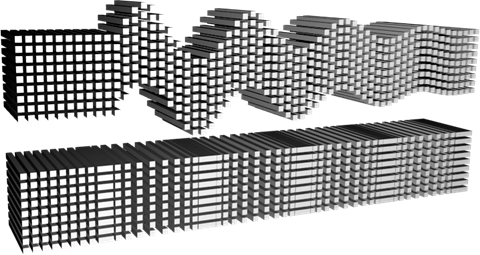
Knowledge and Skills Statement
The further explanation is designed to be a resource for educators that helps them better understand the topic their students are learning. Further explanations may be written at a more complex level than would be expected for students at the grade level.
Energy manifests in multiple phenomena, such as motion, light, sound, electrical and magnetic fields, and thermal energy. Energy can be modeled as either motions of particles or as stored in force fields (electric, magnetic, gravitational) that mediate interactions between particles. The total amount of energy in a system does not change, but it can be transferred between objects within the system.
Images like these can be useful when working with students to help them understand transverse and longitudinal waves.
Davezelenka, CC BY-SA 4.0 <https://creativecommons.org/licenses/by-sa/4.0>, via Wikimedia Commons
Research
Farenga, Stephen J., Beverly A. Joyce, and Daniel Ness. “Science of the Symphony: Part I.” Science Scope 25, no. 4 (January 2002): 60–64. http://www.jstor.org/stable/43179860.
Summary: "Symphony of Sound" explains the concept of energy transfer through sound and liquid transverse and longitudinal waves. This article supports learning at this grade level and teacher conceptual development beyond this grade level.

